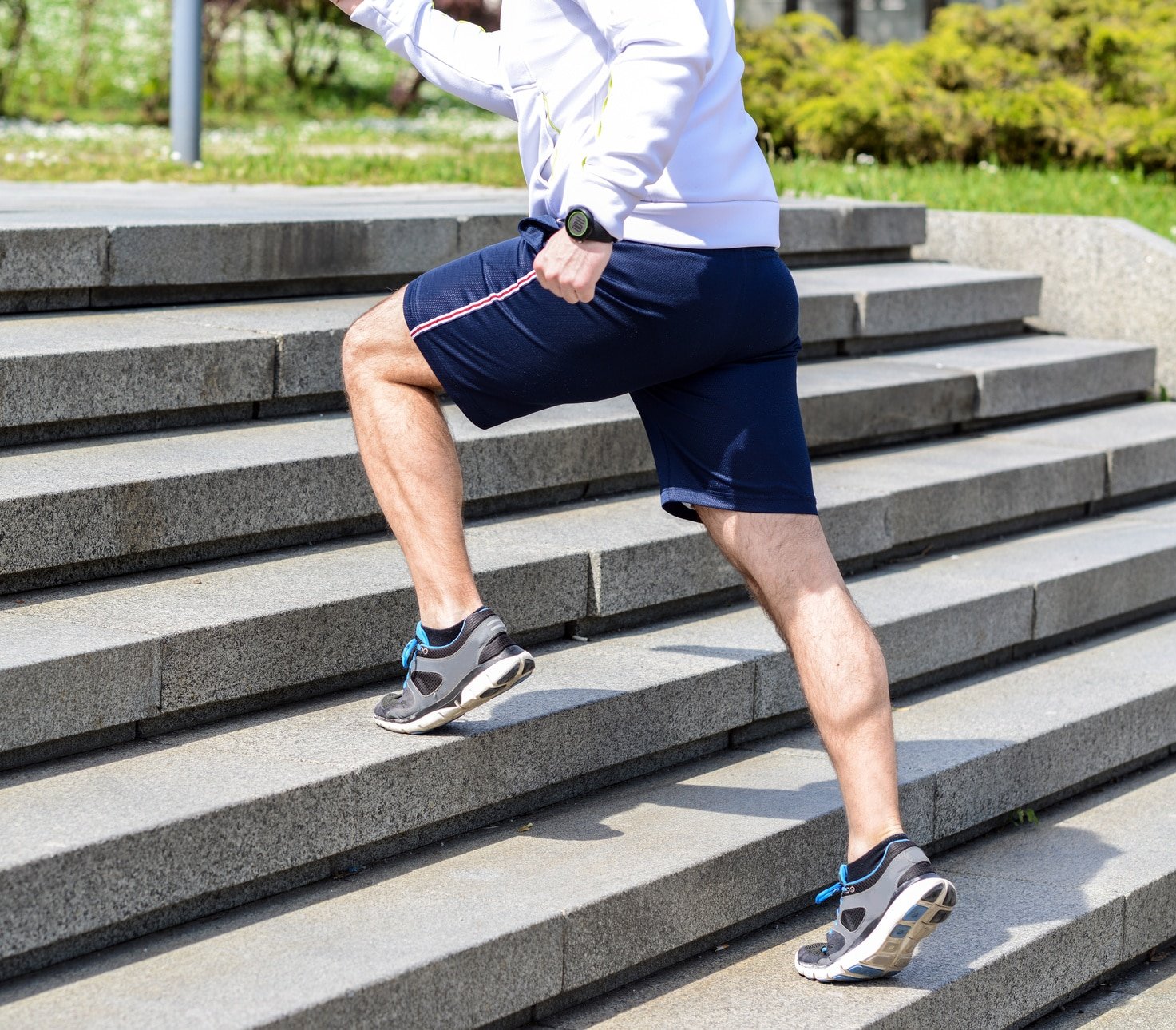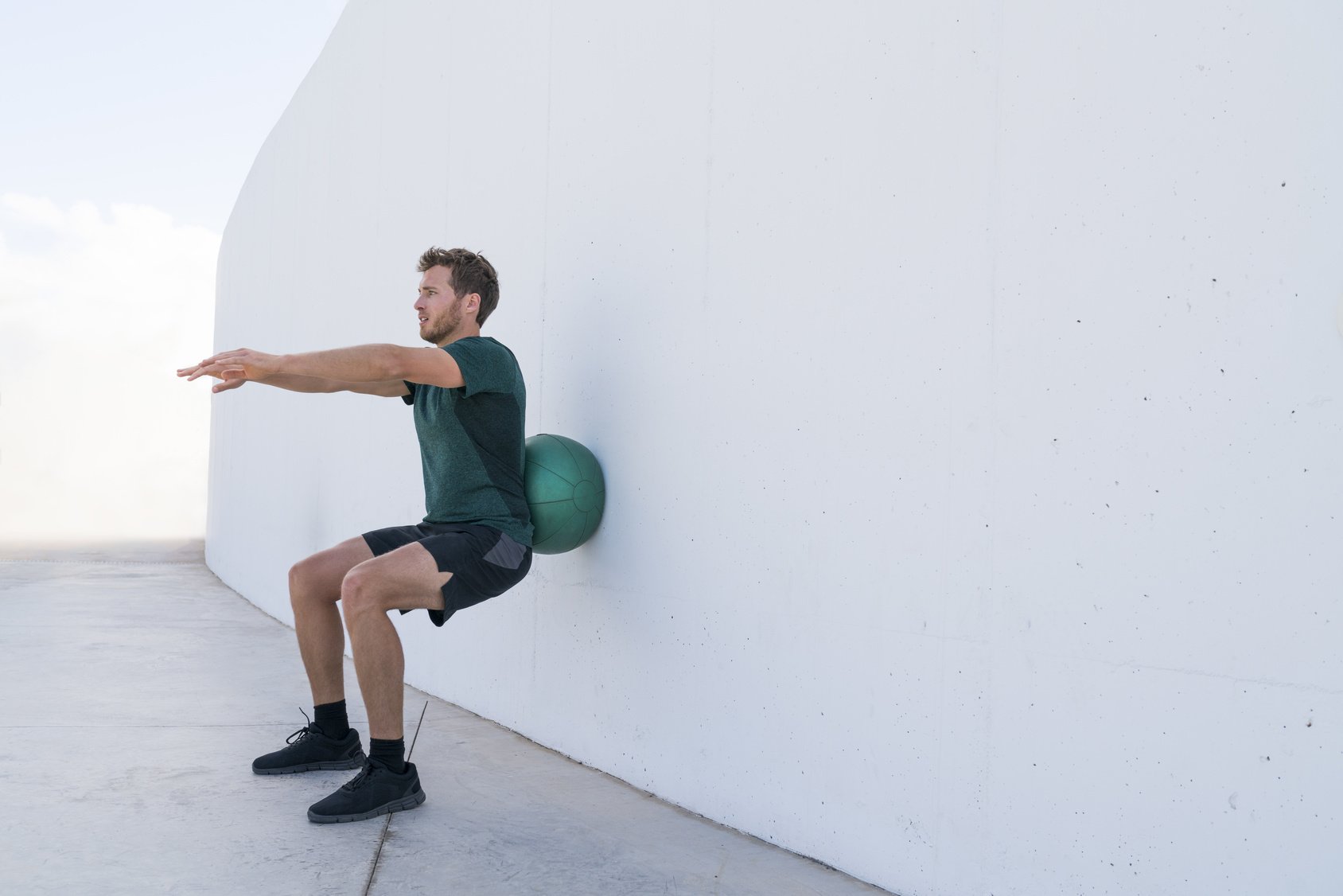Ever felt the need for a solid workout in the comfort of your home, without the need for much space or fancy equipment? Well, Pilates might be the answer you’re looking for, especially for us runners!
When I first heard about Pilates, I thought it was just another trendy workout. But after giving it a try, I realized it’s a unique blend of strength, balance, and flexibility exercises. It was created by Joseph Pilates as a rehabilitation method and has evolved into a popular fitness routine that’s great for runners like me.
You don’t have to invest in costly gear; just grab a mat, and you’re good to go. If you’re not sure how to start, don’t worry; I’m here to guide you.
In this guide, we’ll delve into Pilates, discussing its benefits, providing insights on home workouts tailored for runners, and introducing a set of exercises that can help improve your running game without stepping into a gym.
Ready? Let’s go
What is Pilates?
Ever wondered about Pilates or heard people raving about its benefits without understanding what it’s all about? Let’s explore this fitness phenomenon.
Pilates can be described as a blend of graceful ballet, dynamic calisthenics, and the serenity of yoga rolled into one. It encompasses around 500 exercises that are diverse and highly effective.
Don’t be fooled by the term ‘low-impact.’ While Pilates exercises are gentle on your joints, sparing your body from unnecessary stress, they are far from easy. Mastering Pilates demands a combination of endurance and strength, making them deceptively challenging.
The mastermind behind this method is Joseph Pilates, a carpenter and gymnast with a unique skill set. Joseph’s mission was straightforward yet profound: to bridge the gap between physical and mental well-being.
Joseph initially developed this method as a rehabilitation program for injured soldiers and dancers while he was in the UK. He strongly believed in the profound connection between mental and physical health. His journey continued when he brought his revolutionary concepts to the United States and established his Pilates studio in New York City.
Research has revealed that Pilates offers more than just a toned physique. It can improve posture, increase flexibility, and promote mental well-being. Studies, like the one featured in the Journal of Physical Therapy Science, have shown that Pilates not only relieves lower back pain but also positively affects balance and fall prevention, particularly in older individuals.
The Six Pilates Principles: The Heartbeat of the Method
Let’s explore the six fundamental principles that define Pilates, making it more than just a workout routine. Think of these principles as the guiding principles for your Pilates journey:
- Control: Pilates is all about precise control over movements, much like maintaining a steady pace during a long-distance run. Avoid abrupt sprints or halts, and focus on purposeful exercises that engage specific muscles while keeping others relaxed.
- Concentration: Just as running demands focused attention on each step, Pilates requires complete concentration. It’s like entering a race zone where distractions fade away, and you synchronize with your body’s motions.
- Centering: Visualize your body as having a powerhouse or core that fuels every action. In Pilates, this is known as the “powerhouse,” serving as your body’s GPS, directing each exercise from the center. A strong core in Pilates is akin to a sturdy foundation for your running journey.
- Precision: Precision in Pilates is similar to hitting your desired pace during a race. Every movement should be exact, targeting specific muscle groups. It’s not about quantity; it’s about quality.
- Breath: Pilates emphasizes controlled, deep breathing, much like your body’s metronome, establishing the rhythm for your motions. Proper breathing not only oxygenates your muscles but also deepens the mind-body connection.
- Flow: Flow in Pilates mirrors the smooth rhythm of your stride when you’re in the running groove. Movements should transition seamlessly from one to the next, creating a harmonious fusion of strength and flexibility.
The Benefits of Pilates
Are you looking to enhance your fitness routine? Consider Pilates, a versatile and effective approach that offers numerous advantages, including:
- Increased Muscle Strength: Achieve impressive strength and muscle tone.
- Improved Flexibility & Mobility: Experience enhanced flexibility and range of motion.
- Better Posture: Say goodbye to slouching and hello to an upright stance.
- Enhanced Muscle Control: Gain better command over your muscles.
- Improved Balance: Discover improved equilibrium.
- Symmetrical Development: Attain balanced muscle development on both sides of your body.
- Heightened Focus & Body Awareness: Sharpen your concentration and body awareness.
- Stress Reduction: Witness a reduction in stress and anxiety.
- Enhanced Breathing: Improve your breathing and lung capacity.
- And That’s Just the Start: There’s a whole world of benefits waiting for you in the world of Pilates.
How to Do Pilates At Home?
Ready to transform your living room into a Pilates paradise? It’s easier than you think. Here’s a concise yet comprehensive Pilates routine that’s perfect for your home setup.
All you need is some space, a comfy mat, and a can-do attitude. Remember, Rome wasn’t built in a day, so don’t rush. Take your time mastering the art of each exercise. Precision and patience are your best allies here. This journey demands not only physical grit but also mental finesse.
Skipping steps? That’s a no-no. You’d be robbing yourself of the full Pilates experience. If you’re new to Pilates, brace yourself! It might seem deceptively simple, but it can be quite the workout. Stay patient, focus on activating each muscle group with intention, and watch as your body thanks you for it!
Pilates for Specific Running Goals: Your Personalized Path to Success
Just as you adjust your training plan for different races, Pilates can be customized to support your journey, whether you’re aiming for marathon success, looking to improve your speed, or recovering from an injury. Let’s dive in.
1. Marathon Training: The Long Haul
Goal: You’re on a mission to conquer the marathon distance, and Pilates can be your trusty training companion.
Pilates Prescription:
- Focus on endurance-building exercises to complement your long runs.
- Emphasize core strength and stability to maintain proper form throughout the marathon.
- Incorporate flexibility and mobility exercises to prevent muscle tightness during those extended hours on the road.
- Don’t forget breathing exercises to help you stay calm and focused during the race.
2. Speed Improvement: Racing Against the Clock
Goal: You’re all about speed and setting new personal records. Pilates can help you gain that extra edge.
Pilates Prescription:
- Prioritize exercises that enhance leg strength and power.
- Incorporate dynamic and high-intensity Pilates moves to mimic the fast-paced demands of speed training.
- Work on flexibility to prevent muscle tightness and enhance your range of motion.
- Core work is essential for maintaining proper form during those speedy sprints.
3. Injury Recovery: Bouncing Back Stronger
Goal: You’ve encountered a setback, but you’re determined to recover and return to running stronger than ever.
Pilates Prescription:
- Focus on low-impact Pilates exercises to aid in rehabilitation without putting additional stress on injured areas.
- Pay special attention to strengthening and stabilizing the injured body part.
- Work on flexibility and mobility to regain a full range of motion.
- Gradually reintroduce higher-intensity Pilates exercises as your recovery progresses.
The Pilates Workout Routine
A typical Pilates session involves a wide variety of movements, with low repetitions, usually around 8 to 10 times per exercise. The duration of each session can vary from 30 to 60 minutes, offering a multitude of benefits.
This routine goes beyond just building strength; it provides a comprehensive workout experience. You’ll burn calories, reduce the risk of injuries, alleviate lower back discomfort, and enjoy numerous other advantages.
Here’s my top recommendation: Commit to this routine at least twice a week, or even more if your schedule allows. Aim for each session to last approximately 20 to 30 minutes. However, always prioritize impeccable form in your Pilates practice. In Pilates, quality always takes precedence over quantity.
The Swan
The Swan, an elegant and effective Pilates move, is all about grace and strength. Here’s how you can master it:
Find Your Starting Position: Begin by lying flat on your stomach. Place your hands just in front of your shoulders, palms pressing gently into the mat. Ensure your shoulders are relaxed and drawn away from your ears, like a swan’s graceful neck.
Engage and Lift: Brace your core – think of drawing your belly button towards your spine. Now, as you inhale, slowly lift your torso. Use your forearms and hands as your grounding force, pressing into the mat. Keep your gaze forward, channeling a sense of forward momentum.
Hold and Lengthen: As you find yourself in the raised position, hold there for a breath. This is where the magic happens. Feel your spine elongating, as if you’re reaching towards the sky with the crown of your head.
Graceful Descent: Exhale and gently lower your torso back to the starting position. Imagine your spine is a string of pearls, each vertebra touching the mat one at a time. This slow descent is as crucial as the ascent.
Repeat: That’s one graceful rep. Remember, in Pilates, it’s not about speed. It’s about control and fluidity. So, take your time with each movement.
Scissors
Scissor Kicks, a Pilates classic, are all about balance, control, and coordination. Here’s your step-by-step guide to nailing this move:
Find Your Base: Lie down comfortably on your back. Keep your knees bent and feet planted firmly on the ground. Engage your core by drawing your belly button towards the spine.
The Initial Lift: Curl your head up slightly, lifting your shoulders off the floor. It’s a subtle lift, just enough to engage your upper abdominal muscles.
Leg Positions: Extend your right leg towards the ceiling, keeping it as straight as possible. At the same time, lift your left leg just off the ground. The positioning of your legs should resemble an open pair of scissors.
The Switch: Inhale deeply. As you exhale, gently switch the position of your legs. Your left leg now reaches for the ceiling, while your right leg hovers above the ground. This movement is where the ‘scissoring’ comes into play.
Control and Core: Throughout this exercise, your core should remain engaged. Keep your back flat against the ground. Avoid any arching or strain.
Repetition and Sets: Aim for 20 alternating scissor kicks to complete one set. For a thorough workout, complete three sets. Remember, it’s not about speed; it’s about controlled, deliberate movements.
Corkscrews
The Corkscrew exercise is a Pilates gem that targets your core and improves your control and stability. Here’s how to master this elegant and effective move:
Grounding Yourself: Begin by lying flat on your back. Your arms should be by your side, palms pressing firmly into the floor. This arm position provides stability and grounding.
Leg Lift: With controlled motion, lift your legs towards the ceiling. Your legs should be straight and vertical, directly above your hips. Engage your inner thighs by squeezing them together, as if you are holding something between them.
Toe Pointing: Point your toes gracefully towards the ceiling, elongating your legs even further. This not only engages your leg muscles but also adds an element of finesse to the movement.
The Corkscrew Motion: Now, initiate the corkscrew movement. Gently take your hips to the right side, holding for a moment to engage your obliques. Then, circle your legs around to the left, maintaining their straightness.
Core Engagement: As you move your legs over to the right, let your hips lift slightly off the ground. This requires significant core engagement. Then, in a fluid motion, pull your legs back up to the starting position.
Alternate Sides: Repeat the movement to the left side. Remember, it’s the hips that lead, and the legs follow in a controlled, circular path.
Repetition and Sets: Aim for 10 complete circles (to the right and left) to complete one set. The movement should be smooth and controlled, focusing on form rather than speed.
Shoulder bridge with a kick
The Bridge with Leg Extension is a fantastic exercise for targeting your glutes, core, and hamstrings. Here’s how to execute this powerful move with precision:
Starting Position: Begin by lying on your back on a comfortable mat. Your arms should be straight along your sides, palms facing down for stability. Place your feet flat on the ground, ensuring they are directly under your knees.
Engage and Lift: Engage your core and glute muscles as you prepare to lift. Then, smoothly raise your hips towards the ceiling, aiming to create a straight line from your knees all the way to your shoulders. This bridge position is the foundation of the exercise.
Right Leg Extension: With your hips lifted and stable, extend your right leg out in front of you. Then, in a controlled motion, raise it towards the ceiling, pointing your toes elegantly. Be mindful to keep your knees aligned with your collarbone and hips, maintaining balance and control.
Return and Switch: After reaching the peak of the extension, bend your right knee and lower your leg back to the starting bridge position.
Alternate Sides: Now, switch to your left side. Extend your left leg out, then upwards, mirroring the movement you just did with your right leg.
Complete the Rep: Returning your left leg to the starting position completes one full rep.
Form and Focus: Throughout the exercise, focus on keeping your movements smooth and controlled. Pay attention to your breathing, exhaling as you lift and extend, and inhaling as you return to the starting position.
Kneeling Sidekick
The Kneeling Sidekick is a graceful yet challenging exercise, perfect for engaging your core, improving balance, and toning your legs. Here’s a step-by-step guide to mastering this elegant move:
Initial Position: Begin by kneeling on a comfortable mat, positioning yourself sideways. Keep your knees slightly apart to ensure stability. Extend your arms to the sides, forming a “T” shape, parallel to the floor.
Right Arm Placement: Shift your weight slightly and place your right palm on the floor. Your fingers should point away from your knee, creating a firm base. This arm will help stabilize your body during the exercise.
Left Arm Positioning: Place your left hand behind your head, bending the elbow so that it points upwards. This position helps engage your core and maintain balance.
Transition to Sidekick: Smoothly lower your left hand to the ground, aligning it with your right hand for support. Simultaneously, extend your right arm upwards, still keeping your hand behind your head.
Execute the Sidekick: Engage your core muscles for stability. Then, in a controlled motion, kick forward with your right leg, extending it fully. Make sure your movements are smooth and deliberate.
Return and Repeat: Gently bring your right leg back to the starting kneeling position. This completes one rep.
Switch Sides: After completing 10 reps on your right side, switch to your left. Repeat the same movement, this time kicking with your left leg and supporting yourself with your left hand.
Set Completion: Aim for 10 reps on each side to complete one set. For a comprehensive workout, perform three sets.
Side Leg Lifts
Embark on a journey of toning and strengthening with the Side Leg Lifts, an exercise that seamlessly blends simplicity with effectiveness. Here’s how to execute this graceful movement:
Initial Position: Start by lying on your left side, ensuring your body is in a straight line. Extend both legs fully, creating an elongated silhouette.
Upper Hand Placement: Place your upper hand (the right hand, in this case) in front of your body on the mat. This hand will aid in maintaining balance throughout the exercise.
Embrace the Breath: Inhale deeply, allowing the breath to travel down the full length of your spine. Visualize your body elongating with each breath, creating space and readiness for movement
The Lift: With a focus on control, slowly lift your right foot just a few inches off the floor. Keep your foot straight, aligning it with your leg.
Side Movement: Gently move your raised right leg to the side, aiming for a height of about one to two feet. It’s crucial to maintain a slow and controlled pace. This isn’t about speed; it’s about precision and grace.
Repetitions and Sets: Perform 10 repetitions on each side to complete one set. For a comprehensive workout, aim for three sets.
Switch Sides: After completing the reps on your left side, smoothly transition to your right side and repeat the same movements with your left leg.
The Roll-up
The Roll-Up is not just an exercise; it’s a harmonious blend of strength, control, and flexibility. Here’s how to perform this classic Pilates movement with elegance and precision:
Starting Position: Begin by lying flat on the mat. Extend your legs straight in front of you, heels together, toes apart, creating a slight V-shape. Extend your arms straight overhead with palms facing each other. Ensure your shoulders are relaxed and away from your ears, creating a sense of length in your neck.
Arm Movement: As you exhale deeply, engage your core and start bringing your arms overhead in a gentle arch. Imagine drawing a semicircle with your arms, graceful and controlled.
The Roll-Up: Continue the movement as your arms move past the 90-degree angle. Begin to lift your head, neck, and shoulders off the mat. Visualize your spine peeling off the mat, one vertebra at a time. Draw in your abs, lifting your arms toward the ceiling as if reaching for the stars.
The Peak: Once you’ve rolled up to a seated position, hold for a moment. Feel the engagement of your core, the stretch in your spine, and the energy coursing through your extended arms.
The Descent: On your next exhale, reverse the motion. Roll down slowly and smoothly, with no jerking or lunging forward. Imagine laying each segment of your spine back onto the mat, one at a time, like a string of pearls gently being placed down.
Repetition: That’s one rep. Aim for smoothness and fluidity in each movement. The roll-up and roll-down should feel like a continuous, seamless motion.
Remember to use your core muscles to roll up and down with control. Do not let your leg lift off the ground or rely on momentum. Don’t cheat.
Shoot for 12 reps to complete one set.
The Hundred
The Hundred is more than just an exercise; it’s a powerhouse of core engagement, breath control, and full-body coordination. Here’s how to perform this quintessential Pilates movement with vigor and grace:
Starting Position: Begin by lying flat on your back on the mat. Bring your knees in toward your chest, ensuring your shins are parallel to the ceiling. This is the foundation of your stability.
Curl Up: On a deep exhale, engage your core muscles as you lift your head, neck, and shoulders off the mat. Imagine curling up over an imaginary ball, keeping the movement controlled and precise.
Leg Extension: With your core engaged, extend your legs to a 45-degree angle from the floor. Keep your heels together and toes apart, forming a Pilates V with your feet. This is your tabletop position—maintain this throughout the exercise.
Arm Movement: Extend your arms alongside your body, just a few inches above the mat. Prepare for the dynamic arm pumping that is central to The Hundred.
The Pump: Begin to pump your arms up and down with vigor, each movement about 3 to 5 inches in amplitude. The motion should be energetic but controlled, as if you’re pressing down on air.
Breathing Sync: Inhale deeply for a count of five as you continue the arm pumping. Then, exhale for another count of five, keeping the rhythm of your arms consistent. The inhalation and exhalation should feel like a wave, smoothly transitioning from one to the other.
The Hundred: Continue the arm pumping and synchronized breathing until you reach 100 arm pumps. The name of the exercise is derived from this count. Your breath, arm movement, and core engagement should all work in harmony.
Finishing Touch: Once you’ve completed the 100 pumps, hug your knees into your chest, gently lower your head and shoulders to the mat, and take a moment to breathe and appreciate the energy you’ve created.









